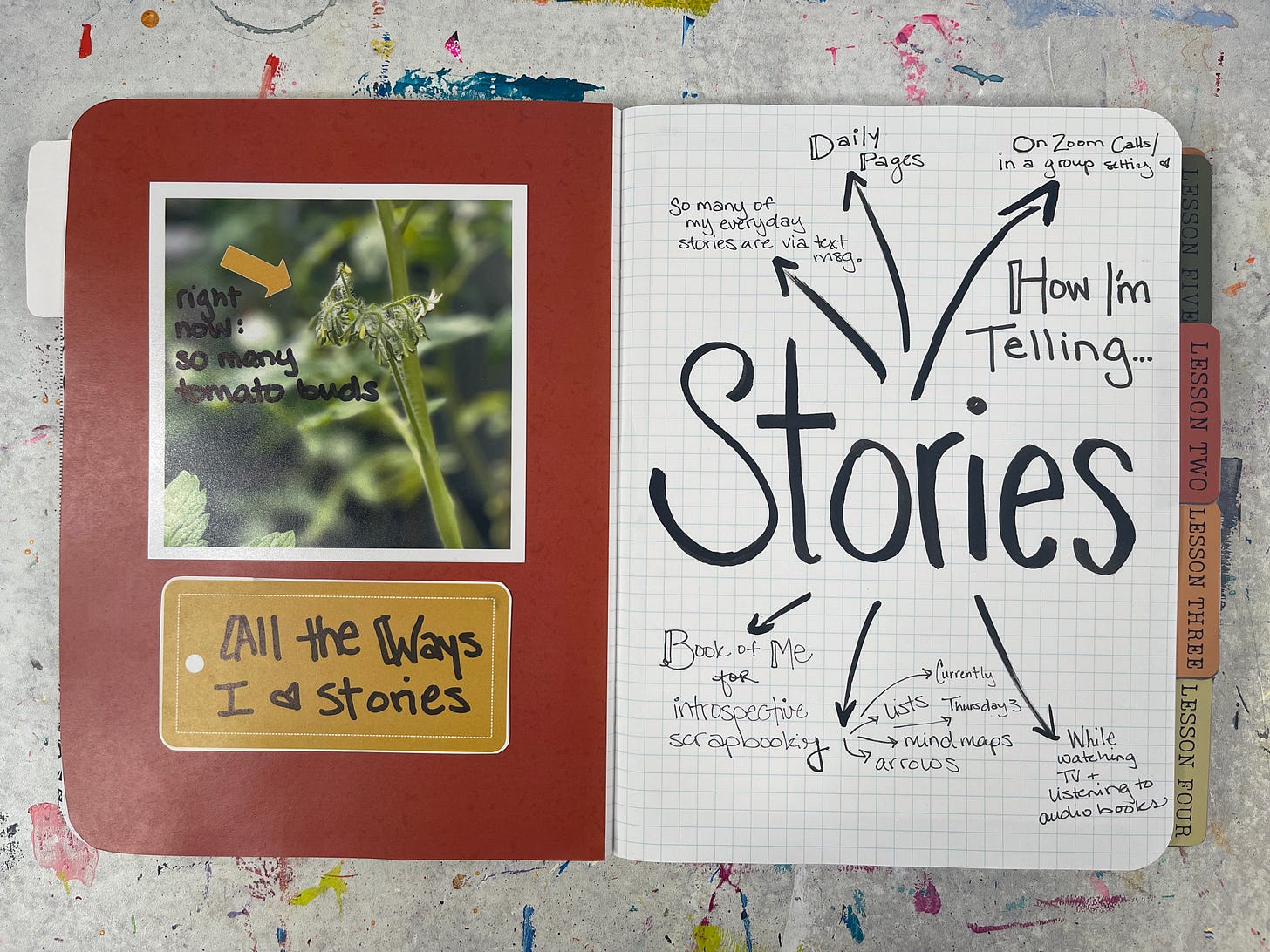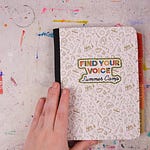Hi friends—welcome to the first trail stop! In today’s lesson, we’re exploring how storytelling takes many shapes—and why that’s a good thing. There’s no one-size-fits-all format here. The way you choose to tell your story is just as meaningful as whatever story you’re telling.
What We’re Focusing On
Storytelling exists in many forms—and all of them are valid
How you tell a story is part of what makes it yours
Noticing what resonates helps shape your voice
Storytelling Exists in Many Forms
Storytelling isn’t limited to personal essays or perfectly crafted paragraphs of prose. It’s in your group chats, your photo captions, the collage you made last week, or the dream you wrote down in a rush before coffee. People have told stories in cave paintings, quilts, TikToks, songs, maps, zines, and memory boxes.
There’s no storytelling rulebook—and that’s a good thing.
So if you’ve ever paused before writing in your journal because you “don’t know how,” this is your permission slip to let that go. The truth is: you already are telling stories. Every single day. We’re just going to help you notice and shape them more intentionally.
Campfire Reflection
Where do your stories tend to show up (even unintentionally)?
How You Tell a Story Is Part of What Makes It Yours
Every time you choose how to tell your story, you’re leaving your creative fingerprint. Maybe you layer photos with doodles. Maybe you write in all caps or scribble sideways. Maybe your favorite way to tell a story is through text messages with your best friend. It all counts.
You don’t need to copy anyone’s style or chase someone else’s version of what storytelling “should” look like. Your format, your materials, your voice—those are all part of your story.
And when you start trusting that your way of doing it is enough, you start unlocking your voice.
Campfire Reflection
What form of storytelling feels easiest for you?
Noticing What Resonates Helps Shape Your Voice
One of the fastest ways to grow your storytelling voice is to notice what draws you in. What kinds of stories do you love? Which ones do you scroll past? What’s the last story that made you stop and pay attention?
Your answers to those questions will be different from anyone else’s—and that’s the whole point. By getting curious about your own tastes, patterns, and preferences, you start to understand what stories mean something to you. And that’s where your voice starts to take shape.
Campfire Reflection
What’s one everyday moment you’d like to capture this week?
Creative Challenge: “All the Ways We Tell Stories”
Create a page that celebrates the different ways you already tell stories.
You might include:
Make a list of 5 stories you’ve encountered this week (text, meme, video, convo, dream, etc.)
Draw or collage a “storytelling map” of formats you love: photography, poetry, journaling, voice memos, etc.
Title a blank page “Storytelling Is…” and fill it with words, doodles, or visuals in different forms.
Pick one form you haven’t used before and try it out (e.g., comic panel, song lyric, zine format).
Remember: this doesn’t have to be polished or finished. It’s about exploring and playing with form.
Wrapping It Up
You’re doing great. Truly. This lesson is about opening up to the idea that there’s more than one way to tell a story—and that your way is absolutely valid. You don’t need fancy supplies or perfect words. You just need a willingness to show up.
Take what works. Leave the rest. This course is here for you on your own terms.
Reminder: If you haven’t already, check out the Start Here post for your downloads, Trail Journal setup, and all the Summer Camp logistics.
Join the Conversation
What’s one storytelling form you’ve used without even realizing it? Or one you’re curious to try?
Drop it in the comments—one word, a sentence, a whole story—anything goes.












